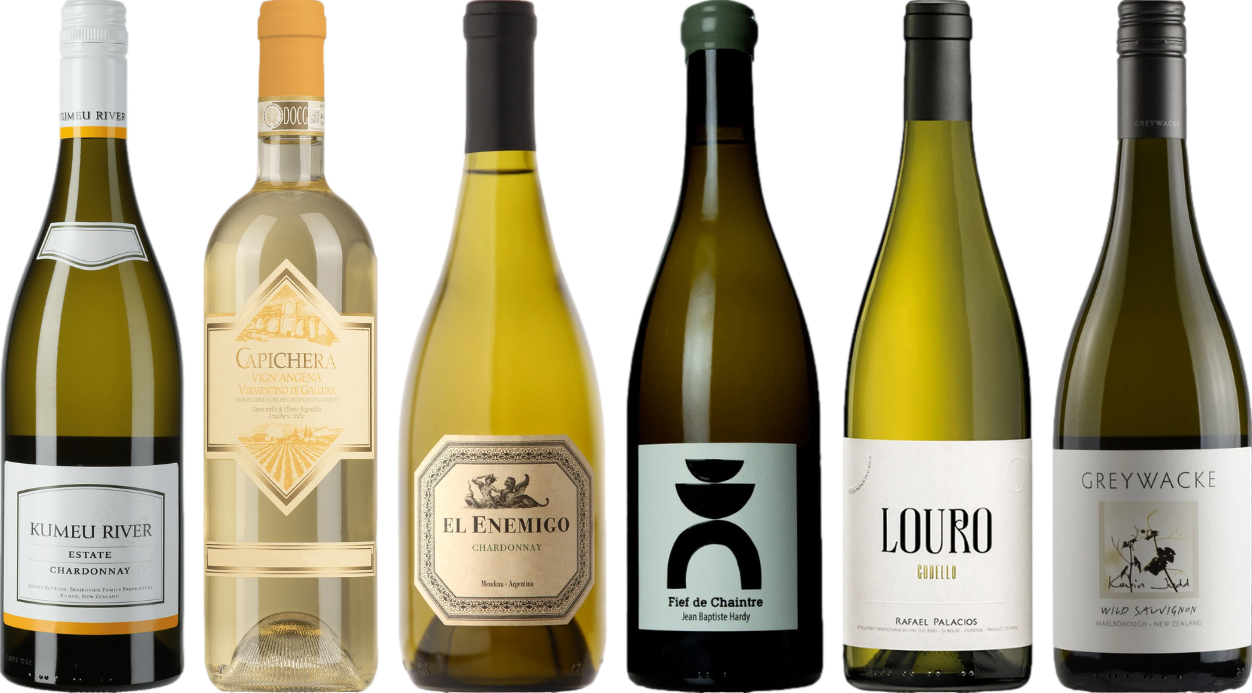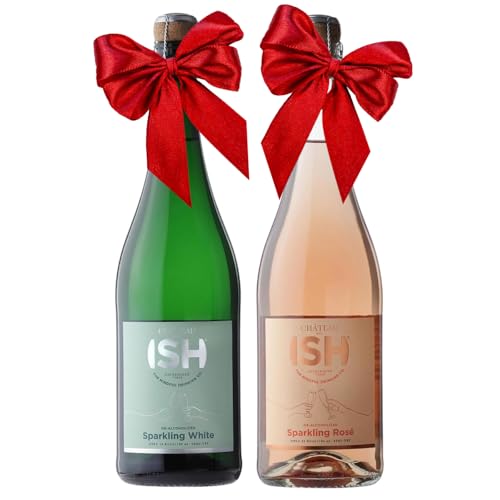

For a refreshing experience, consider Sauvignon Blanc, especially those from regions like Marlborough, New Zealand. Its vibrant acidity and herbaceous notes embody the hallmark of a non-sweet selection. Look for labels that emphasize “dry” on the bottle for assurance.
Chardonnay is another standout, particularly when sourced from Burgundy or California. Opt for those that showcase minimal oak influence, which typically results in a cleaner, more straightforward profile. This grape’s versatility means you can find expressions that range from lean and zesty to richer styles without residual sugar.
Pinot Grigio, especially from Northern Italy, offers a light and crisp alternative with a refreshing finish. This varietal is generally crafted to emphasize fruitiness while maintaining a dry character. It’s perfect for enjoying on a warm day or pairing with seafood dishes.
Lastly, consider the unique attributes of Albariño from Spain. Its bright acidity and stone fruit flavors make it a delightful choice, often enjoyed with shellfish or light salads. Seek out bottles labeled as “seco” for the driest options available.
Recommendations for Dry Varietals
For those seeking crisp and clean options, I recommend exploring the following selections:
- Sauvignon Blanc – Renowned for its zesty acidity and herbal notes, this varietal shines in regions like New Zealand and California.
- Chardonnay – Opt for unoaked versions to experience bright citrus and green apple flavors, particularly from Chablis or cooler coastal areas.
- Pinot Grigio – A fantastic choice from Italy, offering a light body with refreshing pear and white peach nuances.
- Albariño – This Spanish beauty is known for its salinity and floral aroma, perfect with seafood dishes.
- Verdelho – A lesser-known gem, this varietal provides tropical fruit flavors and a delightful finish, often found in Portugal and Australia.
For a more adventurous palate, consider these unique options:
- Assyrtiko – A Greek standout, showcasing minerality and bright acidity, ideal for pairing with grilled octopus.
- Grüner Veltliner – Hailing from Austria, it offers white pepper and stone fruit characteristics, excellent with light Asian cuisine.
- Fiano – An Italian varietal with rich flavors of honey and almonds, great for pairing with roasted chicken.
Choosing the right bottle can elevate your dining experience. Explore these options to find the perfect match for your meal or occasion.
Identifying Dry White Wine Characteristics
To pinpoint a non-sweet variety, focus on acidity levels, which should be high, providing a crisp and refreshing quality. A key indicator is the absence of residual sugar; ideally, look for labels indicating less than 1% sugar content. This often correlates with a more pronounced minerality, enhancing the overall complexity.
Aroma and Flavor Profile
Expect aromas of citrus, green apple, and stone fruits, while flavors lean towards lemon zest, pear, and herbal notes. These characteristics are often found in regions known for producing non-sweet varieties, such as the Loire Valley or regions in Italy. The absence of overt sweetness will allow these flavors to shine through without being overshadowed.
Serving and Pairing Suggestions
Serve these selections chilled, ideally around 45-50°F (7-10°C), to emphasize their refreshing nature. Pair with light seafood dishes, salads, or grilled vegetables to complement the acidity and enhance the food’s flavors. Experimenting with cheese, particularly goat cheese or fresh mozzarella, can also yield delightful results.
Popular Dry White Wine Varietals
For those seeking exceptional options, consider these standout varieties:
- Sauvignon Blanc: Known for its zesty acidity and vibrant citrus flavors, this grape delivers a refreshing experience. Regions like Marlborough in New Zealand and Sancerre in France produce some of the finest examples.
- Chardonnay: While this grape can exhibit a range of styles, look for unoaked versions that emphasize crisp apple and pear notes. California and Chablis in France are ideal sources for this style.
- Pinot Grigio: This Italian varietal offers light, crisp textures with flavors of green apple and lemon. It’s a fantastic choice for warm weather and pairs well with seafood.
- Albariño: Hailing from Spain, Albariño provides a delightful blend of peach and apricot flavors with a mineral finish. It excels with shellfish and Asian cuisine.
- Vermentino: This Mediterranean grape is often bright and aromatic, showcasing notes of lime and herbs. It’s a versatile option that pairs wonderfully with grilled fish and salads.
Each varietal brings its own unique character and food pairing potential, allowing for a diverse tasting experience. Explore these selections to find your favorites!
Regions Known for Dry White Wines
France’s Loire Valley stands out for its exceptional offerings. Muscadet, originating from this region, is celebrated for its crispness and mineral profile. Sauvignon Blanc from Sancerre and Pouilly-Fumé showcases vibrant acidity and herbaceous notes, making them excellent choices.
In Italy, the Veneto region produces Soave, renowned for its floral and citrus characteristics. Friuli-Venezia Giulia is another hotspot, especially for Pinot Grigio, which tends to be zesty and refreshing.
Spain’s Rías Baixas is famous for Albariño, often showing bright acidity and a hint of salinity, perfect for seafood pairings. Similarly, the Txakolina from the Basque Country offers a unique effervescence and citrus-driven profile, ideal for a sunny day.
Germany’s Mosel region is known for its Riesling. While many perceive Riesling as sweet, the dry versions, particularly those labeled “Trocken,” exhibit remarkable minerality with crisp apple and stone fruit flavors.
Australia’s Adelaide Hills and Margaret River are emerging leaders in the production of Sauvignon Blanc and Chardonnay. These regions produce wines with intense fruit flavors balanced by refreshing acidity.
| Region | Notable Varietals |
|---|---|
| Loire Valley, France | Muscadet, Sauvignon Blanc |
| Veneto, Italy | Soave, Pinot Grigio |
| Rías Baixas, Spain | Albariño |
| Mosel, Germany | Riesling (Trocken) |
| Adelaide Hills, Australia | Sauvignon Blanc, Chardonnay |
Exploring these regions will undoubtedly lead to discovering exceptional bottles that complement a variety of dishes and occasions. Enjoy the journey of tasting and learning!
Food Pairings for Dry White Wines
Seafood dishes, especially those featuring shellfish like oysters and clams, complement the crisp acidity and minerality found in many selections. Grilled fish with a squeeze of lemon enhances the freshness, creating a balanced experience.
Poultry, particularly roasted chicken or turkey with herbs, harmonizes well with the fruity notes and subtle oak in certain varieties. A creamy sauce can elevate this pairing, creating a delightful contrast.
Vegetarian Options
Salads dressed with vinaigrettes and featuring ingredients like goat cheese or citrus fruits pair beautifully. The acidity in the dressing lifts the flavors, creating a refreshing combination.
Vegetable-based dishes, especially those incorporating asparagus or artichokes, work well with the herbal notes present in some options. Light pasta dishes with cream sauces also complement the smooth textures often found.
Cheese Pairings
Soft cheeses such as Brie or Camembert create a luxurious match. The creaminess of the cheese balances the acidity, providing a rich mouthfeel.
Hard cheeses like aged Gouda or Parmigiano-Reggiano enhance the depth of flavor, with nutty and savory notes complementing the wine’s profile.
How to Taste and Evaluate Dry White Wines
Begin with the appearance. Pour a small amount into a clear glass. Observe the color; it should range from pale straw to deep gold. Swirl gently to release aromas, then take a moment to appreciate clarity and viscosity.
Next, focus on the aroma. Bring the glass to your nose and inhale deeply. Look for fresh fruit notes like citrus, green apples, or stone fruits. Herbal, floral, and mineral scents may also emerge. Identify dominant aromas and how they interact.
Tasting Techniques
Take a small sip and allow the liquid to coat your palate. Notice the balance of acidity, sweetness, and bitterness. A well-structured pour will have a refreshing crispness. Pay attention to the flavor profile–common characteristics include lemon zest, grass, or even hints of oak, depending on the varietal.
Assess the finish. A long, clean aftertaste often indicates quality. Consider how the flavors evolve as you savor the wine. Is there complexity? Does it leave a lasting impression?
Evaluation Criteria
Use a scoring system to rate aspects such as aroma, taste, and finish. This can help in comparing different selections. Take notes on each evaluation to refine your palate and remember your favorites. Engaging with others during tastings can enhance the experience and provide diverse perspectives.
Common Misconceptions About Dry White Wines
Many believe that the absence of sweetness equates to a lack of flavor. This misconception overlooks the complexity and depth that can be found in these beverages. In reality, various varietals offer a range of aromas and tastes, including citrus, floral notes, and mineral qualities, even without residual sugar.
Sweetness and Acidity
Another common myth is that high acidity implies sweetness. In fact, elevated acidity can enhance the perception of dryness, making a wine taste crisper and more refreshing. It’s essential to understand that the balance of acidity and flavor profile greatly influences the overall experience.
Serving Temperature Misunderstandings
Some think that all should be served ice-cold. However, serving at a slightly warmer temperature can reveal intricate aromas and flavors. Aim for temperatures around 45-50°F to fully appreciate the nuances in these beverages.
Exploring these common misunderstandings will enhance your appreciation for these beverages. For maintenance tips, check out this can you put shoes in the tumble dryer faq on shoe maintenance.








